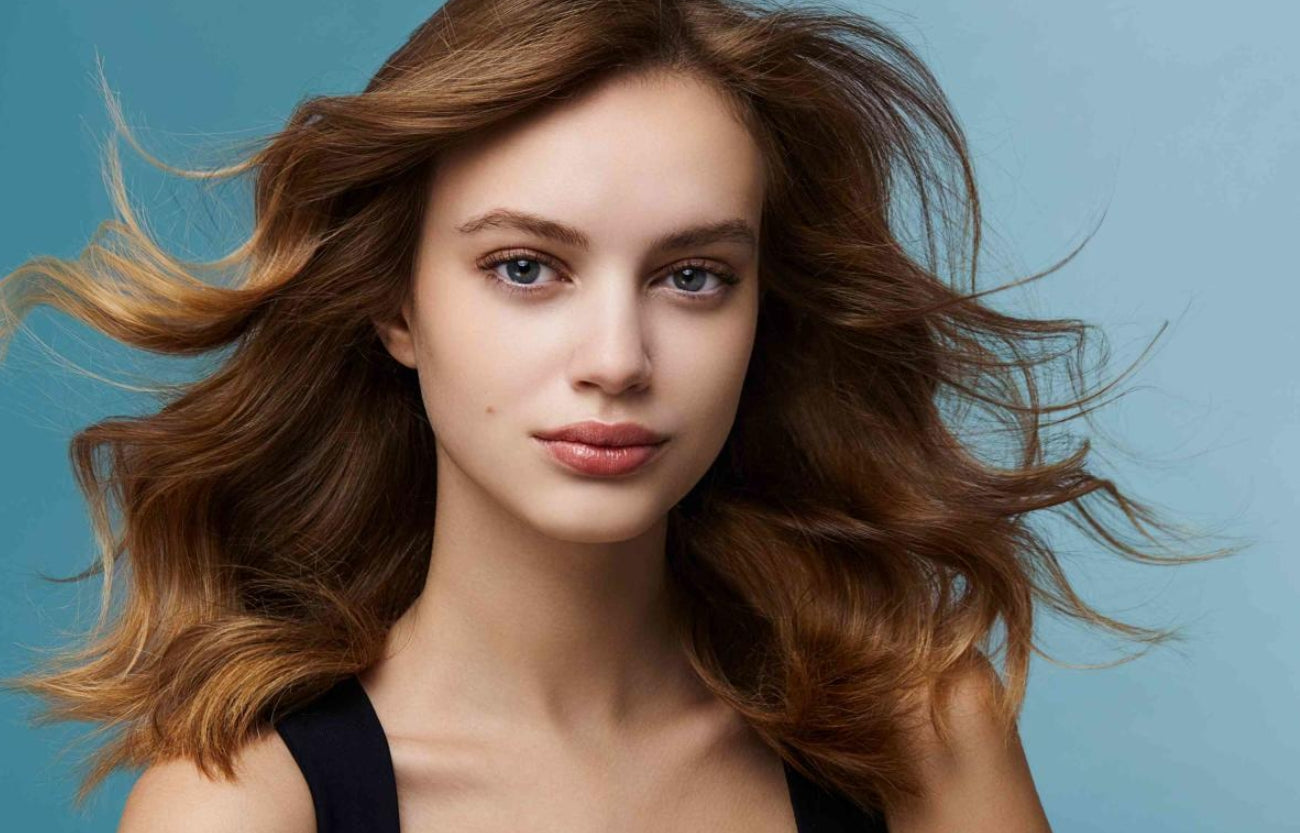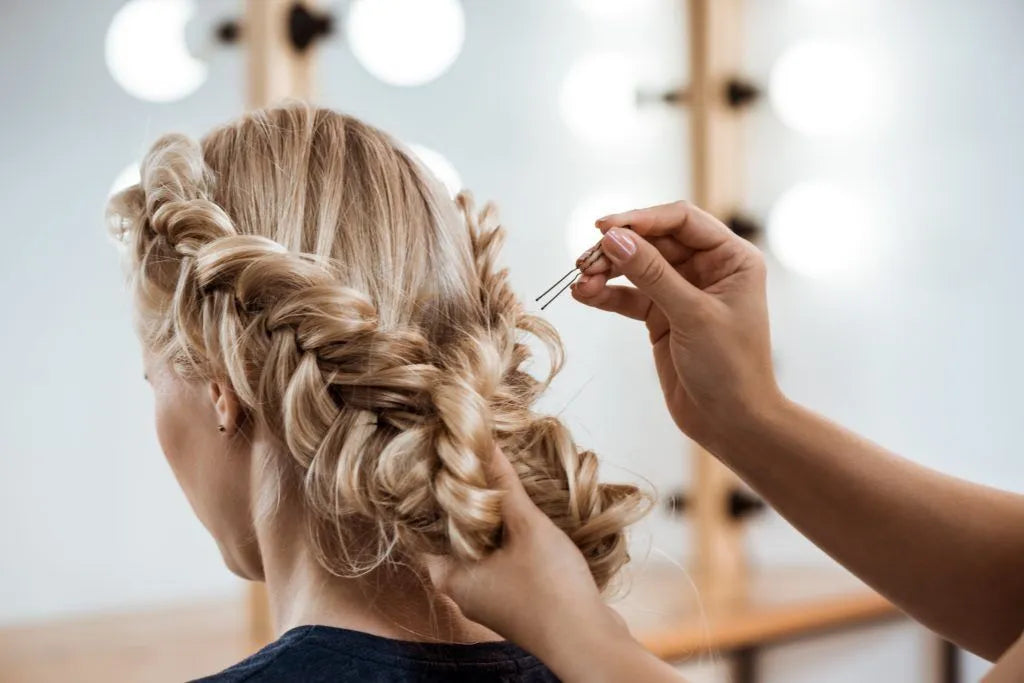Choosing the right wig is crucial not only for aesthetic purposes but also for comfort and self-confidence. This blog post will delve into two popular types of wigs: monofilament wigs vs lace wigs. Each offers unique benefits and suits different needs and preferences. We'll explore their key differences, advantages, and help you determine which type might be best for you, whether you're dealing with hair loss, seeking a new style, or needing a wig for sensitive skin. Join us as we navigate these options to find your perfect fit.
Understanding wigs
Wigs have been used for centuries, initially as symbols of status in ancient Egyptian and Roman societies, and later as fashion statements and solutions for hair loss. Over time, wigs have evolved from the elaborate powdered wigs of 16th-century European courts to modern, realistic options designed for everyday use. Today, wigs offer numerous benefits: they boost confidence for those experiencing hair loss due to medical conditions, provide fashion versatility, and allow for effortless style changes. They also serve as protective styles for natural hair, reducing wear from styling and environmental exposure, making them a practical choice for many.

What is a monofilament wig?
Monofilament wigs are meticulously crafted using a special mesh material that resembles the appearance of a natural scalp. Each hair strand is individually hand-tied to this mesh, allowing for free movement and creating the illusion of natural hair growth. This careful construction method of monofilament wigs contributes to their realistic appearance, versatility in styling, breathability, and durability. Here are what make monofilament wigs stand out.
-
Natural-Looking Scalp Appearance: The transparent nature of the monofilament material ensures that the wearer's scalp can be seen through the mesh, offering a highly realistic look, especially in the parting areas.
-
Versatility in Styling: The individual attachment of hairs allows for flexibility in styling. Wearers can part their hair in multiple directions, just like natural hair, accommodating various hairstyles to match different occasions and personal preferences.
-
Benefits for Sensitive Scalps: Monofilament wigs are particularly suited for individuals with sensitive scalps because the mesh is softer and more breathable than traditional wig bases. This reduces irritation and discomfort, making it ideal for long-term wear.
Catering to a diverse range of individuals
-
Monofilament wigs are especially beneficial for individuals who require a wig due to medical reasons, such as chemotherapy-induced hair loss, as they offer a combination of comfort and natural appearance.
-
They are also preferred by those who desire a high degree of styling flexibility and wish to maintain a natural look with their wig.
-
Due to their detailed construction, they are well-suited for individuals who wear wigs daily and are looking for durability along with comfort.

What are lace wigs?
Lace wigs are made with a delicate, transparent lace base into which individual hairs are knotted or sewn. Renowned for their realism and versatility, these wigs are available in two primary types: full lace and lace front.
Full lace wigs vs. lace front wigs
-
Full Lace Wigs: These wigs feature a cap entirely constructed from lace, offering extensive styling flexibility. Wearers can fashion their hair into ponytails, updos, and more, just as they might with their natural hair, thanks to the full coverage of the lace.
-
Lace Front Wigs: These wigs incorporate lace at the front while using a more robust material at the back of the cap. Ideal for achieving a natural hairline at the forehead, lace front wigs are perfect for those who prefer the appearance of natural hair upfront without needing the option to style the entire scalp.
General features of lace wigs
-
Realistic Hairlines: A key feature of lace wigs is their ability to replicate a natural hairline, which makes them virtually identical to natural hair. This characteristic is especially valued in lace front wigs, where the fine lace at the front merges flawlessly with the wearer's skin, enhancing the illusion of natural hair growth.
-
Styling Flexibility: Lace wigs are celebrated for their flexibility in styling. The structure of these wigs allows for a range of hairstyles, from sleek buns to high ponytails, without revealing that one is wearing a wig.
Who are lace wigs best suited for?
Lace wigs are perfect for those seeking an exceptionally realistic look, particularly around the hairline. They are favored by both celebrities and everyday users who enjoy the flexibility to switch up their styles without the commitment to a permanent change. Full lace wigs are especially suitable for active individuals who need a wig that can support a variety of hairstyles and withstand physical activities. On the other hand, lace front wigs are ideal for those who prioritize a natural-looking hairline but do not require the extensive styling capabilities of a full lace wig. Overall, lace wigs are highly regarded for their natural appearance and versatility, appealing to anyone who values both realism and flexibility in their hair choices.
Comparison of monofilament wigs vs lace wigs
Comparing monofilament wigs vs lace wigs, we need to understand that both of them offer distinct advantages depending on the wearer’s needs. The choice between the two wigs often depends on individual preference, specific needs for hair styling, and budget considerations. Let’s see what differences do they have in various aspects.
How realistic do they look?
Monofilament Wigs
-
Realism in Scalp Appearance: Monofilament wigs excel in providing a natural-looking scalp due to the transparent base that closely mimics human skin. Each strand of hair is individually tied to the monofilament fabric, allowing for hair to part naturally in any direction, enhancing the overall realism.
-
Versatility in Hair Parting: This type of wig offers superior versatility in styling, as the individual attachment of hairs means you can part the hair on any section of the wig, creating different looks that appear very natural.
Lace Wigs
-
Realistic Hairlines: A prominent attribute of lace wigs is their capacity to simulate a natural hairline, which is particularly effective for hairstyles that draw the hair back. The delicate lace along the front edges of the wig can be custom trimmed to align with the wearer’s forehead, merging flawlessly with the skin to create a virtually undetectable boundary.
-
Variety in Styles: Full lace wigs take realism further by allowing complete styling freedom; the hair can be styled up or down, including high ponytails and updos, without revealing the wig. This capability is due to the lace covering the entire scalp, mimicking natural hair growth throughout.

Which is better for long-term wear?
Monofilament Wigs
-
Comfort: Monofilament wigs are favored for their long-term comfort, thanks to a specially crafted base material that is soft and breathable. This makes them an ideal option for individuals with sensitive scalps or those who wear wigs for extended periods, ensuring a comfortable experience even with prolonged use.
-
Breathability: The sheer nature of the monofilament fabric allows for better air circulation around the scalp, which reduces heat and moisture buildup under the wig. This feature is particularly beneficial for those living in warmer climates or undergoing treatments like chemotherapy that may cause scalp sensitivity.
Lace Wigs
-
Comfort: Lace wigs, especially those with lace fronts, are also comfortable but might feel slightly less soft than monofilament wigs. The lace material, while lightweight and breathable, can sometimes be a bit stiffer, depending on the quality and treatment of the lace.
-
Breathability: Lace wigs provide excellent ventilation, with the lightweight lace material allowing for air to flow freely, which keeps the scalp cool. Full lace wigs, in particular, offer superior breathability due to the entire cap being made of lace.
Which lasts longer and requires more care?
Monofilament Wigs
-
Durability: Monofilament wigs are known for their longevity. The construction involves individually tying hair strands to a fine mesh, which, although time-consuming, results in a durable and robust wig. The materials used in monofilament wigs also tend to be high-quality, contributing to their overall durability.
-
Maintenance: While monofilament wigs require regular maintenance to keep them looking their best, they are generally more forgiving when it comes to handling. Regular washing, conditioning, and proper storage will maintain the wig’s appearance and extend its lifespan.
Lace Wigs
-
Durability: Lace wigs, especially full lace wigs, tend to be more delicate due to the extensive use of fine lace material throughout the cap. The lace can be prone to tearing if not handled with care, particularly during styling and cleaning.
-
Maintenance: Lace wigs require meticulous care to prevent damage. They need to be washed with gentle shampoo and conditioner, dried carefully, and stored on a wig stand to keep their shape. The lace, especially around the hairline, may require periodic repairs or reinforcement.
Which is more expensive?
-
Typically, full lace wigs tend to be more expensive than monofilament wigs. This is due to the extensive use of delicate lace material throughout the entire cap, which allows for a high degree of styling versatility and a very natural look that mimics real hair growth. The craftsmanship required to create a full lace wig, along with the quality of the hair used (often high-grade human hair), contributes to their higher cost.
-
However, it's important to note that specific pricing can vary widely depending on factors like the brand, hair type (synthetic vs. human hair), and where the wig is purchased. Lace front wigs, which combine lace and other materials, can be less expensive than full lace wigs but more comparable to or slightly higher in price than monofilament wigs depending on the design and hair quality.
In conclusion
To conclude, monofilament wigs vs lace wigs present distinct advantages: monofilament wigs offer exceptional realism with a natural-looking scalp and are comfortable for long-term wear, particularly for sensitive scalps; Lace wigs provide unparalleled styling flexibility and a realistic hairline, ideal for varied styling. Both types come with different price points and maintenance needs. When choosing between monofilament and lace wigs, consider your specific requirements for appearance, comfort, durability, and budget to find the best fit for your lifestyle and aesthetic desires.




Leave a comment
All comments are moderated before being published.
This site is protected by reCAPTCHA and the Google Privacy Policy and Terms of Service apply.